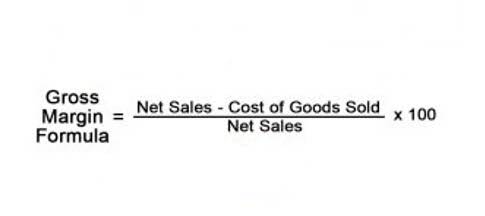
What are the differences between financial accounting and managerial accounting? You will also get an overview of the financial statement and a brief overview of the financial accounting standards. Investors considering a company value the statement of retained earnings because it provides insights into the mindset and motivations of the business’s management team. Higher retained earnings values indicate the company has plenty of cash on hand to finance new initiatives and growth, which is attractive to investors. Private companies are not required to provide this information; only public companies must. Public companies include any organization that issues shares available to the general public.

Financial Planning: the basics and process
- It helps you keep tabs on the company’s present financial health and rate of financial growth.
- The major difference between them is the timing of transaction recording.
- GAAP is a set of principles that governs the preparation of financial statements.
- Financial statements are prepared at regular intervals — usually monthly or quarterly — and at the end of each 12-month period.
- For example, a ski resort may have a fiscal year ending in late spring or early summer when business operations have ceased for the season.
- Financial accounting is the process organizations use to record, summarize, and report transactions resulting from their day-to-day operations.
- Using the data in EXERCISE 1–13, prepare a statement of changes in equity similar to the example illustrated in Section 1.4.
The income statement helps stakeholders understand the profitability of the business, identify trends in income and expenses, and evaluate overall financial performance. Financial accounting holds businesses accountable by providing a detailed record of their financial transactions and operations. This accountability is crucial for internal control since it aids in monitoring performance, detecting fraud, and ensuring that resources are utilized properly and effectively.

Financial Reporting and Stakeholders

The double-entry accounting system forms the foundation of modern financial accounting. This method requires that every business transaction affects at least two accounts, with the total debits equaling the total credits. The system provides built-in error detection and ensures mathematical accuracy in financial record-keeping. It fails to record non-financial aspects financial accounting definition like employee satisfaction and customer retention. Even after taking all the measures, accounting may not unveil the actual business standing. This happens when a firm adopts the accrual basis of accounting or goes with the cost concept while the real asset cost varies.
- The major difference between the two types of accounting is who uses the information and what it is used for.
- In conclusion, accounting is a vital function in any business, providing accurate financial information that can be used for decision-making purposes.
- GAAP and IFRS are the most widely recognized accounting standards, and compliance is enforced through audits conducted by independent auditors.
- Cash accounting, on the other hand, only records transactions in which cash is exchanged.
- Leveling up with proven business tools—no fluff, just practical models, templates, and insights.
- Financial analysis gauges the business’s profitability, stability, and liquidity.
What are some common financial ratios used in financial analysis?

Their expertise helps to ensure compliance with tax laws and regulations, and provides valuable insights for decision-making and strategic planning. Accounting operations refer to the day-to-day financial activities of businesses that involve recording, classifying, and summarizing financial transactions. These operations are crucial for businesses to keep track of their financial performance and make informed decisions. Overall, the key principles of accounting ensure that financial statements are accurate, reliable, and consistent. By following these principles, companies can provide financial information that is useful in making business decisions. Accrual accounting, on the other hand, works on the principles of revenue recognition and matching revenue.
- Follow us on a journey into the mechanics of the financial accounting process, exploring its inner workings and crucial role in presenting a company’s financial story to the world.
- The generally accepted accounting principles (GAAP) form the foundation for financial accounting.
- These stakeholders include investors, creditors, shareholders, lenders, customers, and employees.
- It’s a testament to the power of transparency, accuracy, and accountability in the world of commerce.
- We actually encounter or apply accounting in our daily lives – in budgeting, computing household expenses, checking bank balances, counting change, and many more.
- Financial accounting is the process of recording, summarizing, and reporting a business’s financial transactions to external users, such as investors, creditors, and regulatory agencies.
However, there are three main parameters that can be measured for all companies to check their profitability. These are revenue, Profit Before Interest and Tax (PBIT), and net income. Your financial position entices the interest of stakeholders, creditors, and other parties. The accounting https://www.bookstime.com/ process enables firms and business owners to assess and evaluate financial stability and scope.
Matching Principle
Auditing aims to verify the correctness and reliability of financial reports (financial statements audit). Businesses and organizations need financial statements to introduce every necessary ledger account detail of their operations to external users. Oftentimes, internal users like the management entity also make use of the information in the statements to make financial decisions.
